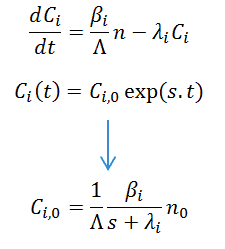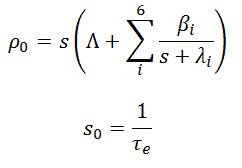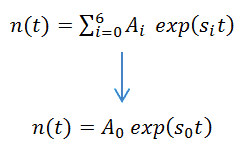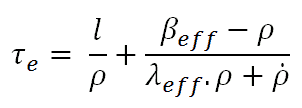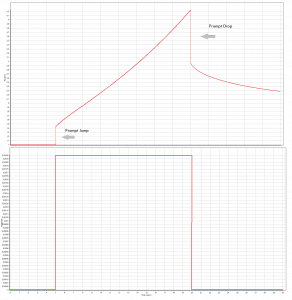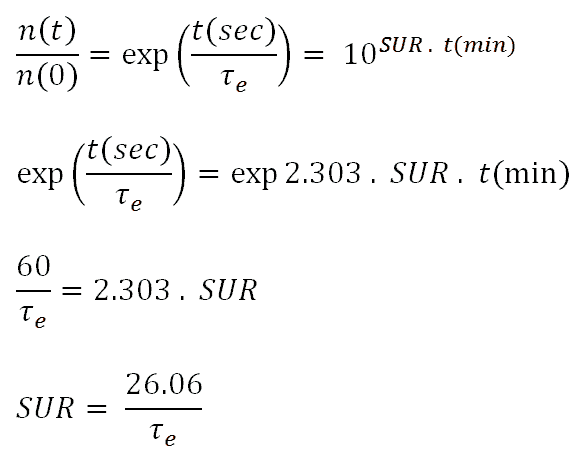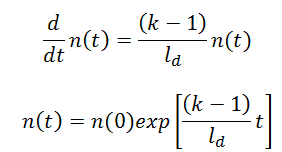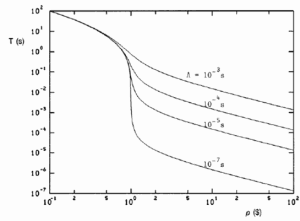If the reactivity is constant, the model of point kinetics equations contains a set (1 + 6) of linear ordinary differential equations with constant coefficient and can be solved analytically. Solution of six-group point kinetics equations with Laplace transformation leads to the relation between the reactivity and the reactor period. This relation is known as the inhour equation (which comes from inverse hour, when it was used as a unit of reactivity that corresponded to e-fold neutron density change during one hour) may be derived.
General Form:
The point kinetics equations may be solved for the case of an initially critical reactor without external source in which the properties are changed at t = 0 in such a way as to introduce a step reactivity ρ0 which is then constant over time. The system of coupled first-order differential equations can be solved with Laplace transformation or by trying the solution n(t) = A.exp(s.t) (equation for the neutron flux) and Ci(t) = Ci,0.exp(s.t) (equations for the density of precursors).
Substitution of these assumed exponential solutions in the equation for precursors gives the relation between the coefficients of the neutron density and the precursors.
The subsequent substitution in the equation for neutron density yields an equation for s, which after some manipulation can be written as:
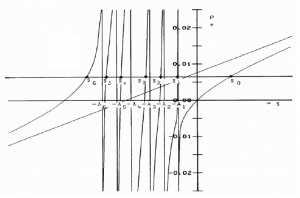
This equation is known as the inhour equation, since the constants of s0 – 6 was originally determined in inverse hours. For a given value of the reactivity ρ the associated values of s0 – 6 are determined with this equation. The following figure shows the relation between ρ and roots s graphically. From this figure it can be seen that for a given value of ρ seven solutions exist for s. The figure indicates that for positive reactivity only s0 is positive. The remaining terms rapidly die away, yielding an asymptotic solution in the form:
where s0 = 1/τe is the stable reactor period or asymptotic period of reactor. This root, s0, is positive for ρ > 0 and negative for ρ < 0, therefore this root describes the reactor response, which is lasting after the transition phenomena have died out. The figure also shows that a negative reactivity leads to a negative period: All of the si are negative, but the root s0 will die away more slowly than the others. Thus the solution n(t) = A0exp(s0t) is valid for positive as well as negative reactivity insertions.
To determine the reactivity required to produce a given period a plot of ρ vs. τe must be constructed using the delayed neutron data for a particular fissionable isotope or mix of isotopes, and for a given prompt generation time. To determine the stable reactor period, which results from a given reactivity insertion, it is convenient to use the following form of inhour equation.
Special Cases of Inhour Equation
